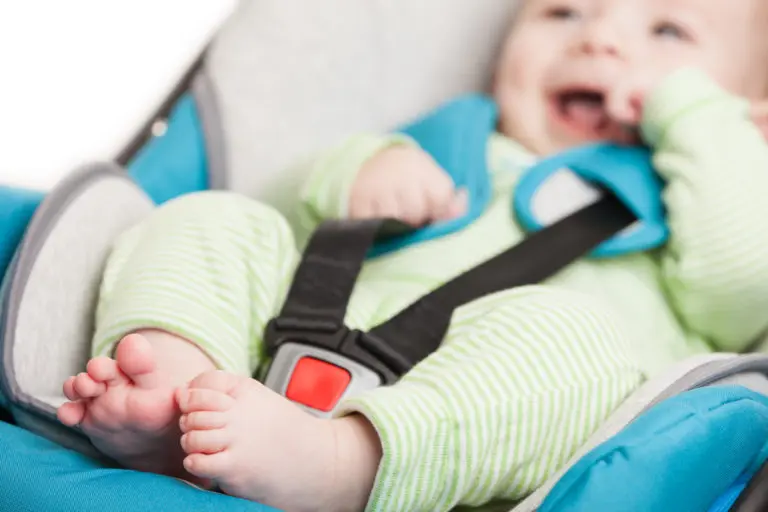Keeping your child safe in the car is one of the primary concerns for parents, and for good reason. A study by the National Highway Traffic Safety Administration (NHTSA) in 2019 revealed that 67% of children killed in car crashes were unrestrained and 46% of car and booster seats are used incorrectly. It’s important to know that car seats are not one-size-fits-all. The age, height, and weight of your kiddo determines which type to purchase. As a rule, all children ages 12 and younger are required to sit in the backseat of the car, regardless of age, weight, or height. In addition, not all car seats fit every type of car, so be sure to test the seat to ensure it fits your specific car.
Types
There are three types of car seats for kids: rear-facing seat, forward-facing seat, and a booster seat.
For all infants and children younger than 4 years old, a rear-facing seat should be used until your child reaches the maximum height or weight of their car seat (usually about 25-60 pounds).
Rear-facing seats come in 3 different styles: rear-facing only, convertible, and a 3-in-1 car seat. Rear-facing only car seats are portable, convertible seats that can convert to a forward-facing seat, and the 3-in-1 car seat converts to a forward-facing and a booster seat.
Once your kiddo outgrows their rear-facing seat, or until age 5, they should sit in a forward-facing seat. Forward-facing car seats also have a harness, as well as a tether that straps to your child’s chest and acts as a seat belt.
A booster seat should be used once your child outgrows the forward-facing seat, which usually happens when they grow taller than 4 feet and 9 inches. Booster seats are available with a built-in high back or backless and both raise your child’s height so that the car’s seat belt fits properly over the center of the chest and on the upper thighs.
When using a booster seat, the seat belt should not cross over your child’s face or neck. Once your child has met the weight and height requirements and is 13 years or older, they are able to sit in the front seat, and always with a seat belt, of course.
Installation
Installing a car seat is just as important as choosing the right one for your family. Be sure to read the manual for your car and the seat for proper installation. The middle seat in the back of the car is the safest place for your baby as it has the lowest chance of injury in the event of a car accident.
Get Your Seat Checked
Call your local fire or police departments to ask for assistance in installing your baby’s car seat. They are secured by the lower anchors or by the car’s seat belt. The lower anchors have a weight limit as well, which can be found on the installation picture on the side of the seat. The seat is considered secured if it does not move side-to-side and only moves forward less than an inch.
Both rear-facing and forward-facing car seats have a harness, which are straps that secure and prevent your child from moving forward. The harness should lay flat with the chest strap at the level of your child’s armpit. If you are not able to pinch any extra material of the harness at the shoulders, it is considered snug and secure.
It is imperative that you check the security of your child’s car seat before driving off and always use a car seat, booster or seat belt, no matter how short the drive is or how much of a rush you are in.
And remember parents, you should also set a good example for your kiddo by always wearing your seat belt as well. Children learn by doing but also by watching. A proper car seat can save your child’s life.
YOU MAY ALSO LIKE: Pain Killers in Pregnancy






Comments are closed.